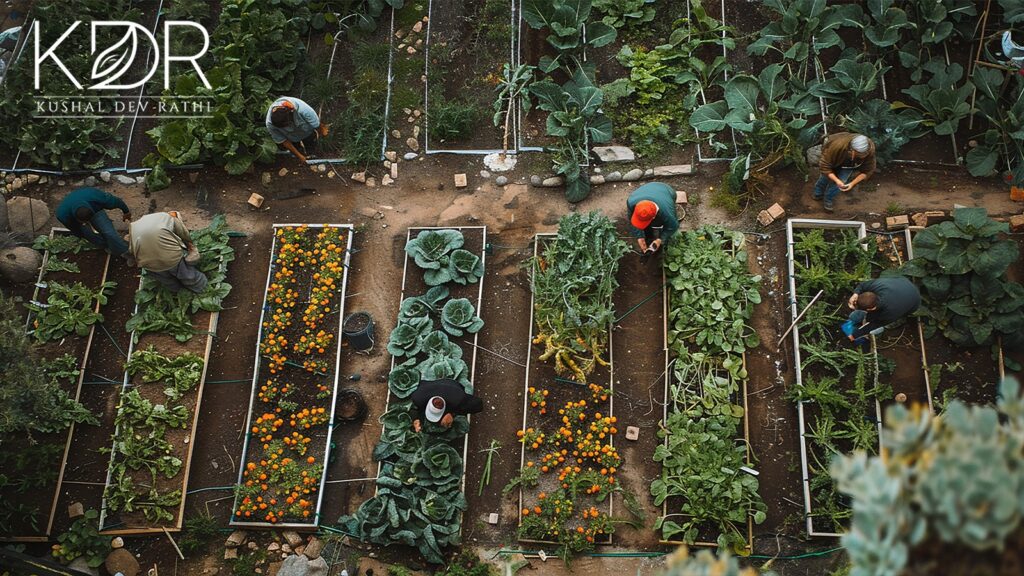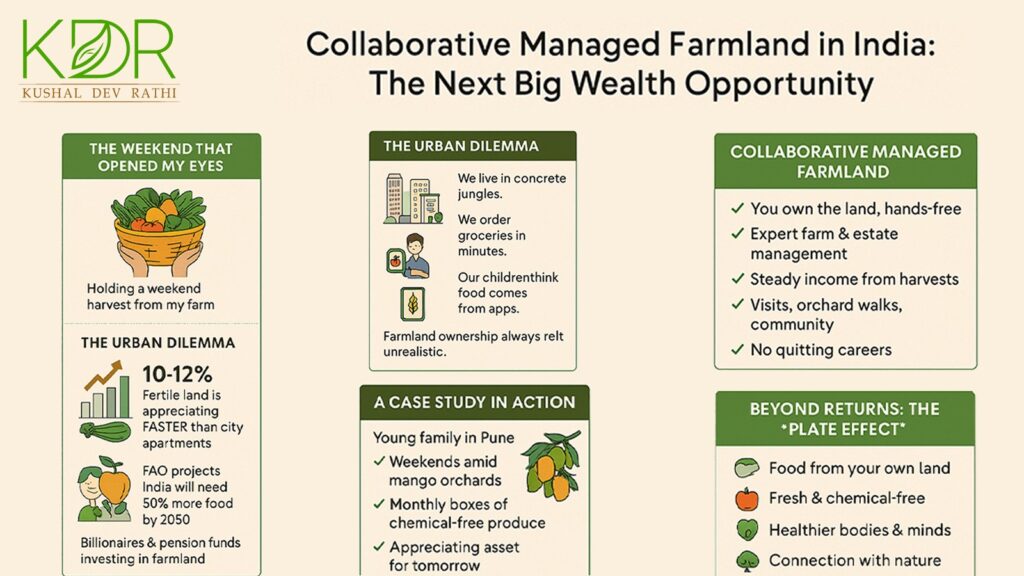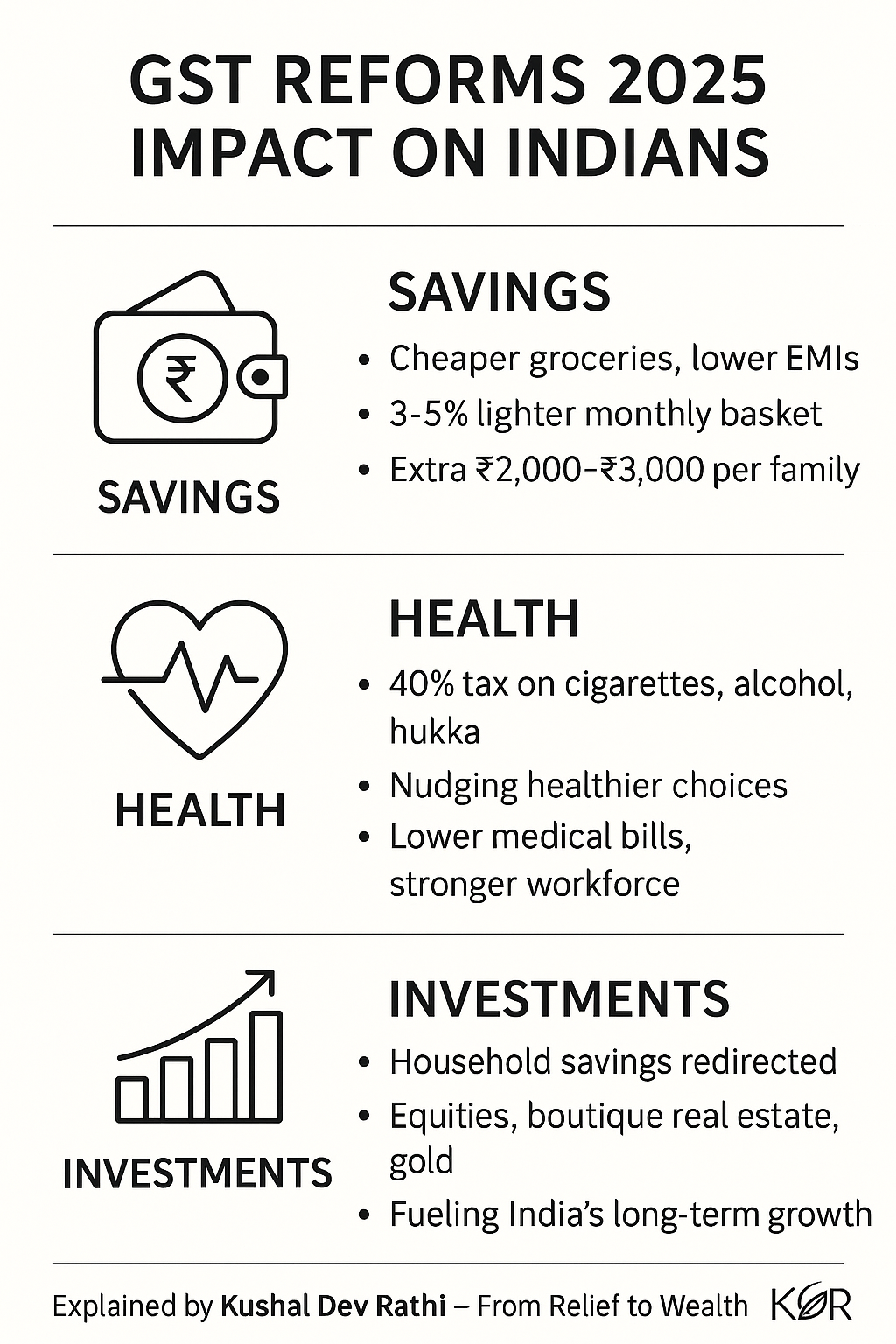CBAM Carbon Tax India 2026 — Beat It with Credits or Pay in Margins
Europe has found a new way to price pollution.
By January 2026, the European Union’s Carbon Border Adjustment Mechanism (CBAM) will become a global turning point — the first international carbon tariff in history.
For Indian exporters, it’s not a distant policy.
It’s a price tag on every ton of carbon hidden in your steel, cement, aluminium, or fertiliser.
For investors and landowners, it’s something else entirely: a once-in-a-generation opportunity to turn land and trees into export-linked carbon currency.
The CBAM carbon tax India 2026 isn’t just about cost; it’s about control — of who pays for carbon, and who gets paid for absorbing it.
Because the same carbon that Europe will tax is the carbon India can capture.
And the same policy that erodes exporter margins can build generational land wealth for those who act now.
CBAM in 60 Seconds
Here’s how it works, simplified.
CBAM means that from 1 January 2026, every tonne of steel, aluminium, fertiliser, cement, hydrogen, or electricity entering the EU will be charged a tax equal to the carbon price European producers already pay under the EU ETS.
In plain words:
If you emit carbon to make it, you pay to sell it.
- Sectors affected: steel, aluminium, cement, fertilisers, hydrogen, electricity.
- Current EU ETS price: ~€80 per tCO₂ (≈ ₹7,600).
- Key dates: 2023 – 2025 monitoring phase, 2026 – tax enforcement.
- Mechanism: importers declare embedded CO₂ → pay tax unless exporter proves it already paid equivalent carbon price at home.
That last clause changes everything.
Because India is launching its own Carbon Credit Trading Scheme (CCTS) in April 2026 — just three months before CBAM enforcement begins.
If CCTS is recognised, Indian credits could directly offset the CBAM carbon tax India 2026.
Why CBAM Matters for India
India exports billions of dollars’ worth of CBAM-covered products to Europe every year.
That trade flow now carries a hidden cost: its carbon intensity.
The numbers
According to [UN Comtrade 2024]:
- Steel exports to EU ≈ US$ 3 billion.
- Aluminium exports ≈ US$ 2.5 billion.
- Fertilisers + cement ≈ US$ 1 billion +.
The emissions gap
- Average EU steel = 1.4 tCO₂ / t.
- Indian steel = 2.7 tCO₂ / t.
→ Excess = 1.3 tCO₂ × ₹7,600 ≈ ₹9,880 per ton in extra CBAM cost.
Multiply that across millions of tons — you get thousands of crores in new liability once the CBAM carbon tax India 2026 begins.
The equity problem
European producers already pay for their emissions; CBAM simply levels the field.
But Indian exporters, who operate in a low-price, high-emission environment, will pay more unless they create certified reductions.
That’s where Indian land and carbon credits come in.
When exporters buy domestic credits from verified land projects, they not only avoid foreign taxes but also feed capital into India’s soil.
CCTS + CBAM: A Perfect Policy Collision
The Carbon Credit Trading Scheme (CCTS) launching April 2026 gives India its first national carbon price.
This is no coincidence — it’s strategic timing.
- CBAM goes live January 2026.
- India’s CCTS launches April 2026.
- Alignment discussions are ongoing under the EU-India Clean Energy Partnership Framework.
If Europe recognises CCTS, exporters that fund domestic credits can deduct that spend from their CBAM carbon tax India 2026 bill.
Translation for investors
Credits generated from Indian afforestation, agro-forestry, solar, or methane-reduction projects could soon be sold not only within India but to EU-bound exporters who need to offset CBAM exposure.
That means a 100-acre plantation outside Pune or Jaisalmer could literally plug into Europe’s carbon ledger.
The Arithmetic of Opportunity
Let’s run the math.
Scenario 1: Exporter’s cost
A steel mill exports 200,000 tons to EU.
Extra CO₂ = 1.3 tCO₂ / t × 200,000 = 260,000 tCO₂.
Tax = 260,000 × ₹7,600 ≈ ₹19.8 crore.
Scenario 2: Credit hedge
Landowner generates 260,000 verified credits via agro-forestry.
Market price ₹6,000 / t → ₹15.6 crore annual revenue.
The exporter offsets the liability; the landowner earns yield.
Everyone wins — except the carbon tax collector in Brussels.
That’s how the CBAM carbon tax India 2026 transforms from a penalty into a new profit channel.
Why Land Is the New Carbon Factory
When you own productive soil, you own time.
Each acre of reforested land sequesters between 0.5 and 2 tCO₂ per year, depending on species and water availability.
At ₹6,000 per tCO₂, that’s ₹3,000–₹12,000 annual yield per acre.
Multiply that by 1,000 acres → ₹3 – 12 million in yearly carbon income.
The billionaires buying barren land in Rajasthan aren’t speculating on real estate; they’re pre-buying the infrastructure for the post-CBAM world.
As KDR puts it:
“They’re not buying land for wheat. They’re buying carbon factories.”
And every acre planted today will sell credits tomorrow — just when exporters start bidding for them.
The Carbon Credit Supply Crunch
According to [IEA Carbon Market Outlook 2025], global credit supply may fall 40 % short of demand once compliance markets expand.
India’s case:
- Demand 2026 = ~70 million credits.
- Supply ≈ 10 million.
- Shortfall ≈ 60 million.
Economics 101: Scarcity drives price.
Early registrants in India’s CCTS will hold the cheapest carbon inventory on the planet.
By the time the CBAM carbon tax India 2026 matures, those early credits could trade 2–3× higher.
Exporter’s Playbook: From Tax to Strategy
1 · Quantify Your Exposure
Audit Scope 1 – 3 emissions.
Benchmark against EU averages.
Calculate tonnage × EU price = potential CBAM cost.
2 · Build Your Credit Portfolio
Partner with verified land projects under CCTS.
Pre-purchase credits for 2026–2030 delivery.
Negotiate 10-year of-take agreements to lock price.
3 · Reinvest in Land
Convert a portion of profit into carbon-positive real estate.
Treat land as a natural balance-sheet hedge against carbon liability.
4 · Tell the Story
ESG-minded customers want traceable low-carbon supply chains.
Declare that your exports are “CBAM-neutral via Indian credits.”
That marketing line could win you contracts as buyers tighten scope-3 criteria.
5 · Stay Updated
Follow India’s Ministry of Environment notifications and EU updates through [Business Standard – CBAM Tracker 2025]
Land Patterns Already Evolving
Rajasthan – Jaisalmer/Barmer
500–2,000-acre acquisitions by corporate entities for solar + carbon combo projects.
Maharashtra – Vidarbha Belt
Agroforestry with carbon sequestration earning 8-15 % annual ROI.
Karnataka – North Corridor
Landbanking near infrastructure with planned eco-estate certification.
All of them pre-positioned for CCTS credits that can be sold into export supply chains as CBAM hedges.
The CBAM carbon tax India 2026 will make such assets even more coveted.
Eco-Estate Economics: Luxury That Pays You Back
Today’s luxury is solar panels and smart homes.
Tomorrow’s luxury is carbon-positive certification.
Example (Alibaug farmhouse, ₹12 crore):
- Maintenance cost ₹8 lakh / year.
- Add ₹20 lakh green infrastructure (solar + trees + water credits).
- Revenue ₹6 – 8 lakh / year via carbon + solar excess.
- 15–25 % premium in resale over non-certified homes.
So while industrialists hedge CBAM liabilities, homeowners earn from the same logic.
Each tree planted in your estate is a micro-credit toward the CBAM carbon tax India 2026 economy.
India’s Policy Momentum
India has already notified nine sectors under the Perform-Achieve-Trade (“PAT”) mechanism — these will link into CCTS.
The next step: integration with CBAM.
- [Financial Express] reported that EU may allow credits purchased in India to offset border tax.
- [World Bank Climate Overview 2025] lists India among top 3 for low-cost carbon mitigation projects.
- [IEA Data Portal 2025] confirms India’s emission intensity improvement trajectory since 2019.
All signs point to one truth: CCTS will anchor India’s response to the CBAM carbon tax India 2026, keeping capital and credit value within our borders.
Community and Ethics: Carbon with a Conscience
Every policy creates winners and losers. CBAM could concentrate wealth if handled poorly.
The solution is designing credit projects that share benefits with local communities.
A ₹50 lakh project that hires village labour for plantation and shares 5 % of credit revenue builds more than carbon stock — it builds trust.
Ethical carbon is also smart carbon: buyers in Europe now pay premium for credits with biodiversity and social impact co-benefits.
That aligns perfectly with KDR’s philosophy — profit rooted in purpose.
FAQs
1 · What exactly is the CBAM carbon tax India 2026?
It’s a border carbon tax imposed by the EU from January 2026 on imported goods based on their embedded CO₂. Indian exporters must pay unless they demonstrate equivalent carbon cost domestically.
2 · Why does it target India specifically?
It doesn’t target India alone — but India is a major exporter of high-emission goods, so its exposure is significant. Hence the focus on CBAM carbon tax India 2026 preparedness.
3 · Can Indian credits really offset CBAM costs?
Yes, if India’s CCTS gets recognition under EU CBAM rules. Negotiations are underway.
4 · When should investors act?
Now. Land prices and credit costs will spike after April 2026 once CCTS is live.
5 · What’s the minimum capital to participate?
- ₹10–25 lakh → managed farmland fractional ownership.
- ₹50 lakh–₹2 crore → direct land for carbon projects.
- ₹5–10 crore → eco-estate model combining carbon + eco-tourism.
Each path leads to the same outcome — carbon yield that offsets the CBAM carbon tax India 2026.
What to Do This Week
For Exporters:
- Run emission audits.
- Identify potential credit suppliers in India.
- Budget for carbon offset cost per ton.
For Investors:
- Acquire land in high-yield zones before prices factor in carbon value.
- Partner with verified project developers.
- Target issuance before 2026 tax phase.
For Homeowners:
- Plant native trees on your property.
- Measure and register carbon offsets.
- Market your estate as “carbon-positive certified.”
Every stakeholder has skin in this game. Because when CBAM arrives, everyone pays for carbon — either to Europe or to the Earth itself.
The CBAM carbon tax India 2026 is not the villain of this story.
It’s the mirror we’ve avoided for decades.
It shows us what pollution really costs — and rewards those who choose regeneration over resistance.
If you’re an exporter, plant credits instead of excuses.
If you’re an investor, buy land that breathes.
If you’re a policymaker, keep our carbon wealth within our soil.
Because when carbon gains a price, land gains a voice.
And those who understand that voice early will own not just acres — but atmosphere.
This is more than economics. It’s a legacy.
It’s the new currency of clean air, measured not in rupees, but in responsibility.






